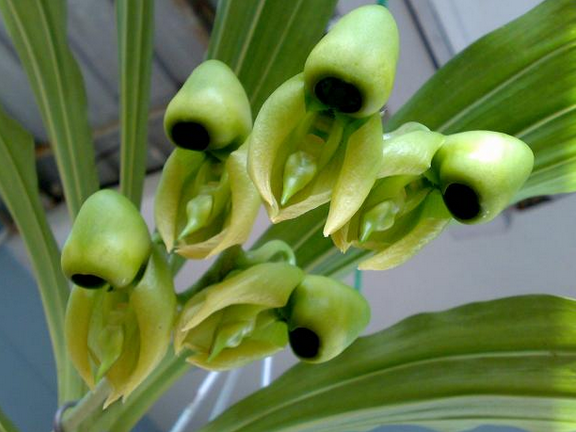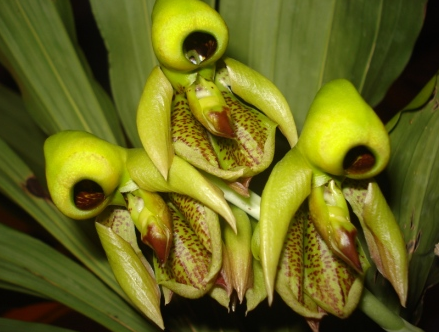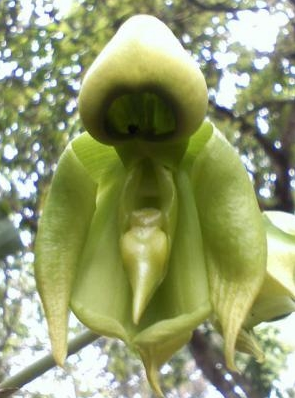+ Spanish
This specie is used by Mexican indigenous in Quintana Roo to treat snake bites, in Tabasco to cure the new born and in Yucatan to remove tumors.
Catasetum integerrimum specie is known for its fragrant green and pale yellow flowers that look hooded or cloaked, reason why they receive the common name “Monk Orchids“, since they resemble praying hooded monks.
It’s relatively easy to grow, as long as the watering regime promotes the mandatory winter dormancy. This tropical orchid is native to the hot, humid forests of southern Mexico to Costa Rica, often appearing in coffee plantations.
Catasetum genus is unique in having different gendered flowers on the same plant. Male flowers have an antenna-like trigger device that snaps pollen onto the backs of visiting bees. These pollen-covered insects then find a hooded female flower and unknowingly pollinate it. Because male and female flowers look different, people may have considerable difficulty identifying plants, especially if growing conditions or gender diphasy prevents the development of both flower genders on a single plant at the same time.
It’s an epiphyte that grows on tree trunks. It develops a clump of conical pseudobulbs that attach to trees with their fleshy roots. The thin, lance-shaped leaves are light green and pleated. They shrivel and drop away by late fall as the plant enters a natural winter dormancy period. Flowering occurs well after new spring growth emerges. Intact catasetum blooms anytime from late spring to fall. A flower stalk rises from the tip of mature pseudobulbs and carries either all male flowers or all female flowers (or occasional bisexual flowers). A plant can produce both flower types, but always on separate flower stalks. The male flowers are dull light yellow while the female blossoms are green. The petals create an ominous, hooded flower face. In shade, plants may only produce male flowers, while both female and male flowers are produced in higher light. Female flowers are also held upside-down, with the lip on the upper half of the blossom.

Where hardy, they can be grown outdoors mounted on a tree trunk or in a hanging basket or slatted wood box. In frostier climes it should be grown indoors in a warm greenhouse or very bright sunroom. Plant in coarse bark nuggets for orchid culture and provide full sun to very bright dappled shade. Too little light prevents good flowering. Water the orchid freely when new growth and foliage is present (mid-spring to fall). From fall to spring, water very little. Do not begin spring watering until new leaf growth reaches two inches (5 cm) long. Good air circulation with high humidity will encourage good growth. Fertilize weekly with a dilute solution of balanced fertilizer from spring to late summer. Don’t be alarmed when the leaves turn yellow in fall; this is the signal dormancy has set in and to markedly reduce watering.


